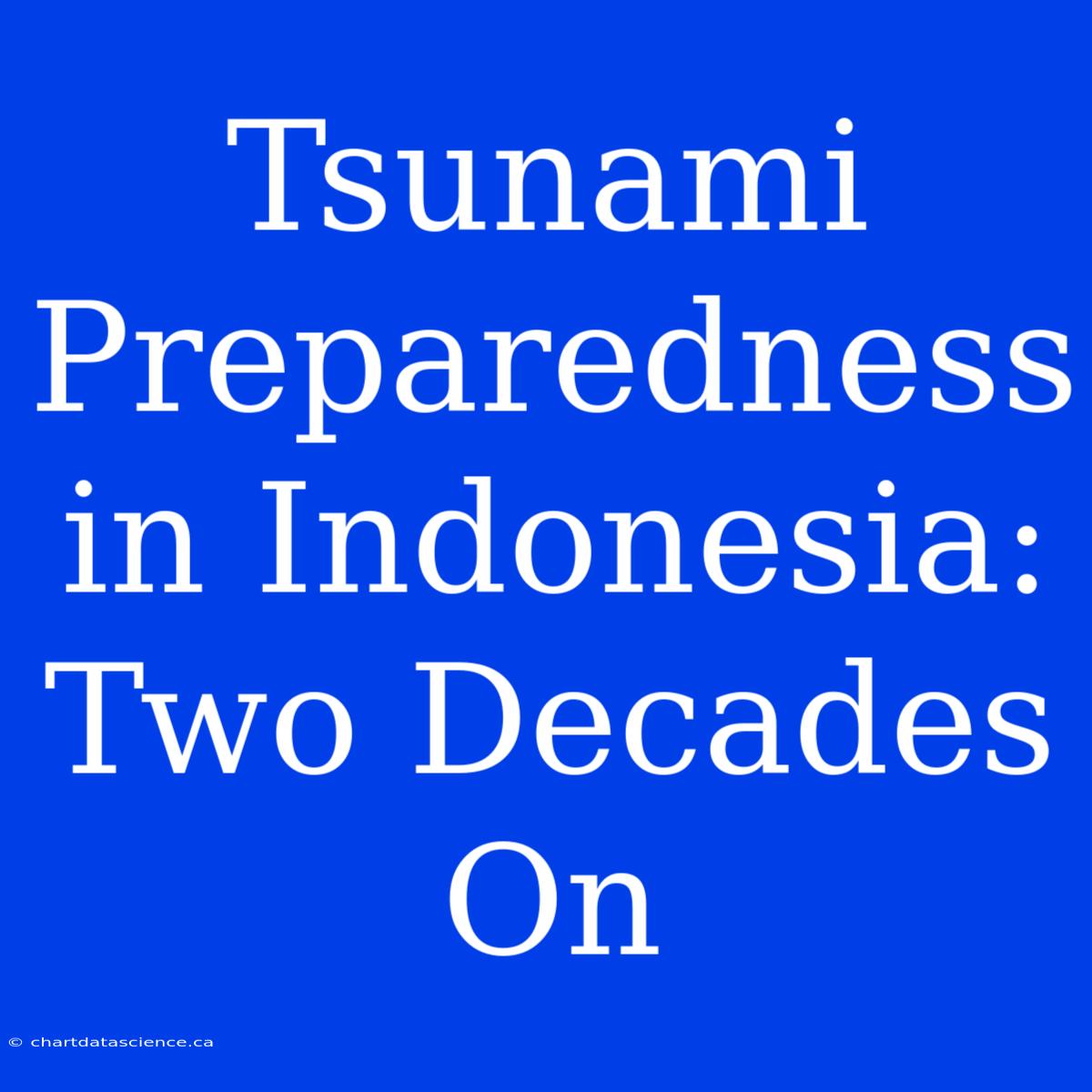Tsunami Preparedness in Indonesia: Two Decades On
Twenty years after the devastating 2004 Indian Ocean tsunami, Indonesia, a nation scarred by the tragedy, continues to navigate the complex path of tsunami preparedness. The memory of the catastrophe, which claimed over 160,000 lives in Indonesia alone, remains a stark reminder of the nation's vulnerability to these natural disasters. While significant strides have been made in strengthening disaster response systems, the journey to achieving comprehensive tsunami preparedness is far from over.
The 2004 tsunami was a wake-up call. It exposed weaknesses in Indonesia's early warning systems, communication networks, and community awareness. In the aftermath, the Indonesian government, aided by international partners, invested heavily in developing robust infrastructure, training local communities, and establishing comprehensive disaster management plans.
Early warning systems have been significantly upgraded. The Indonesian Agency for Meteorology, Climatology, and Geophysics (BMKG) now boasts a network of buoys and seismic sensors across the vast Indonesian archipelago. This network, coupled with improved communication infrastructure, enables rapid detection and dissemination of tsunami warnings.
Public awareness campaigns have been crucial in empowering communities. The government has implemented widespread education initiatives to educate citizens on tsunami risks, evacuation procedures, and the importance of preparedness. School children are taught about tsunami safety, and community drills are regularly conducted in coastal areas.
Despite these efforts, challenges remain. The vast geography and complex coastline of Indonesia pose significant logistical challenges for effective tsunami preparedness. The dense population in coastal regions, coupled with limited resources and infrastructure in some areas, add further complexity.
Furthermore, maintaining public awareness and ensuring the effectiveness of early warning systems require continuous effort. Regular drills, community engagement, and proactive communication strategies are essential to keep preparedness levels high.
Looking ahead, Indonesia must continue to invest in strengthening its tsunami preparedness framework. This includes further improving early warning systems, enhancing communication infrastructure, and integrating technology into disaster management strategies. Investing in community resilience programs, promoting sustainable development practices in coastal areas, and fostering strong partnerships with international organizations are crucial steps towards a more resilient Indonesia.
The journey towards comprehensive tsunami preparedness is ongoing. By learning from the past, staying vigilant, and continuously adapting to new challenges, Indonesia can pave the way towards a future where the devastating impact of tsunamis is mitigated, and lives are saved.

